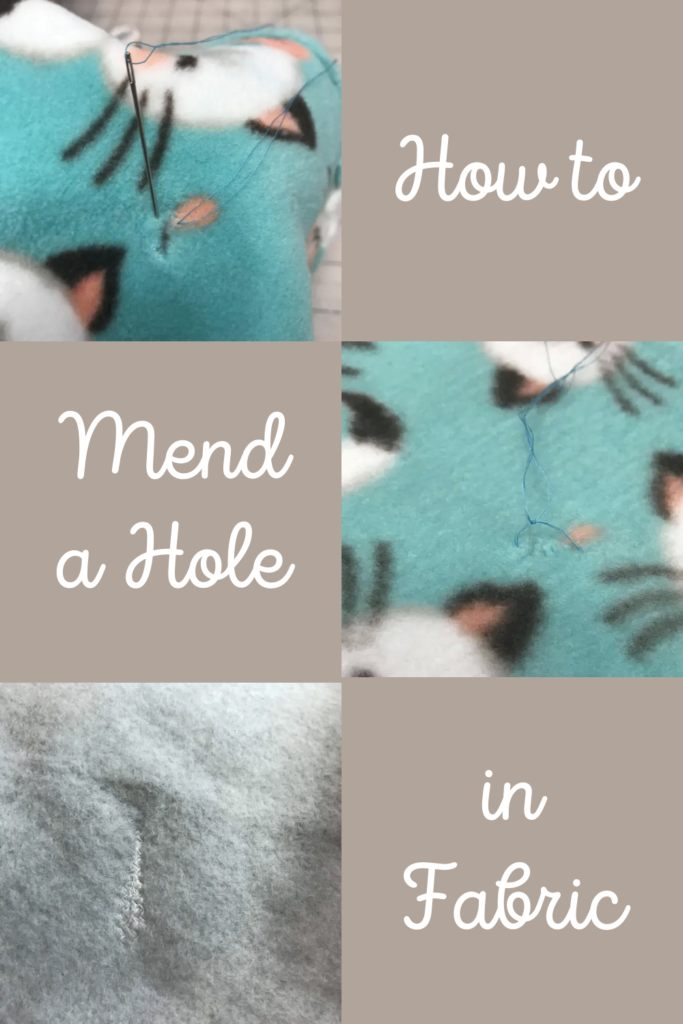
How to Mend a Hole in Fabric: Quick and Easy Tips
Have you ever wondered how to mend a hole in fabric? We all have a favorite piece of clothing that we just can't seem to let go of, even if it has a small hole or tear. But don't worry, you don't have to give up on your favorite clothes just yet! Fabric mending is an easy and quick solution to fix any damage and keep your clothes looking good as new.
This blog post. we will cover two quick and easy methods to mend a hole in fabric. I am sure many of you have had an instance where you needed to patch a hole in a worn item of clothing or perhaps, like me, you cut out a sewing project and later learned that the fabric had a hole in it. Let's get started!
How to Mend a Hole in Fabric | Step-by-Step Instructions
The objective of fabric mending is to ensure durable repairs that are virtually invisible so we'll do our best to show you ways to do that. Tools and Materials to Sew Holes in Your Garment
You will need the following to mend a hole in fabric:
- needle
- sewing thread
- fusible interfacing
- sewing machine
- patching fabric if needed
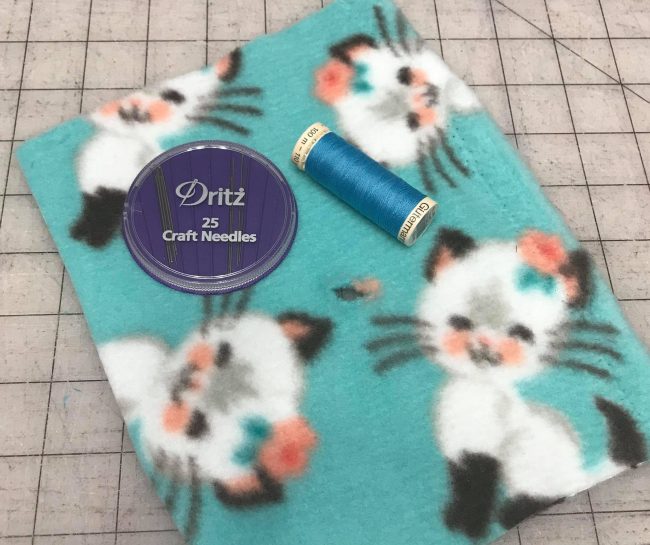
Method #1 | Use a Ladder/Whipstitch to Sew or Mend a Hole in Your Fabric
This technique involves weaving the thread in and out of the fabric to create a ladder-like pattern, then whipping the thread around the edges of the hole to secure it.
To close a hole using a ladder/whip stitch, it is important to sew with even stitches to prevent the fabric from appearing puckered. Start by inserting the needle through one side of the fabric and then through the other side, creating a diagonal stitch. Continue this pattern until the hole is closed, making sure to keep your stitches as even as possible. Once finished, tie off with a knot on the inside of the fabric for a secure hold. This technique can be useful for repairing small tears or holes in garments or other fabrics.
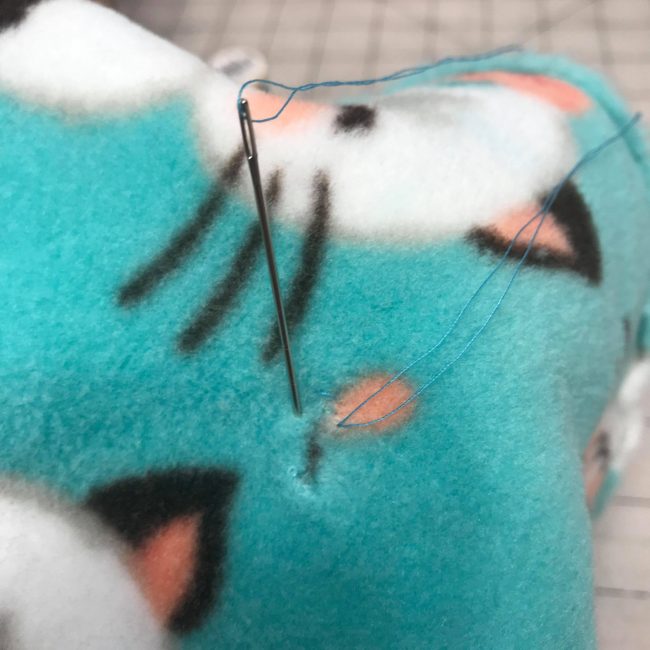
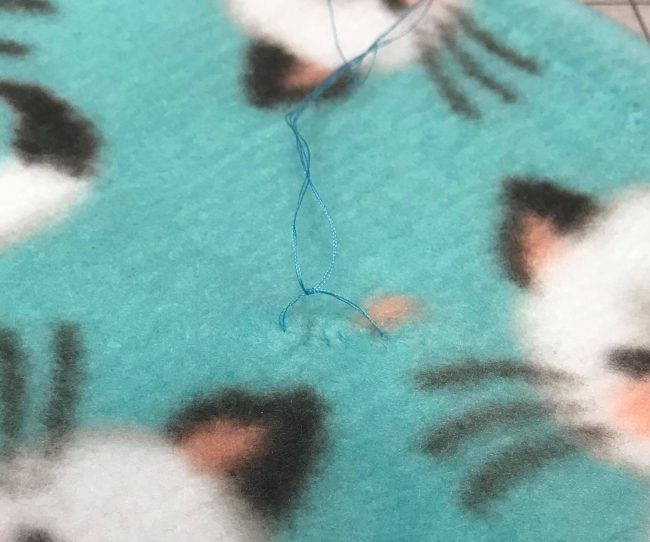
For smaller holes that can't be fixed with interfacing, using a ladder and whip stitch is an effective method of mending. While this method may not be suitable for larger holes, it can be a quick and easy fix for smaller issues like a tear or a small puncture.
Method #2 | Use Iron on Interfacing for Patching the Hole
When repairing a hole in fabric, using interfacing is another effective method. To start, select a piece of interfacing that matches the color of your fabric - white or black are common choices. It's important to choose the right type of interfacing based on whether your fabric stretches or not. If it does stretch, then use stretch interfacing and if not, then non-stretch interfacing should be used. Once you have the correct interfacing, follow the instructions for ironing it onto the backside of the hole to patch it up seamlessly. This method is great for small holes and tears in clothing or other fabrics.
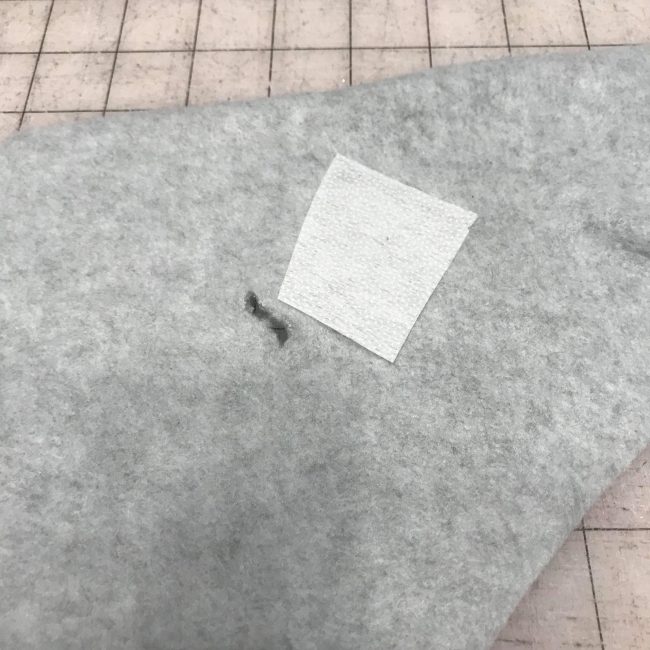
Once you have ironed on some interfacing, take a zigzag stitch to the hole. This isn’t going to look as seamless as it would if you did the first method, but it will mend the hole.
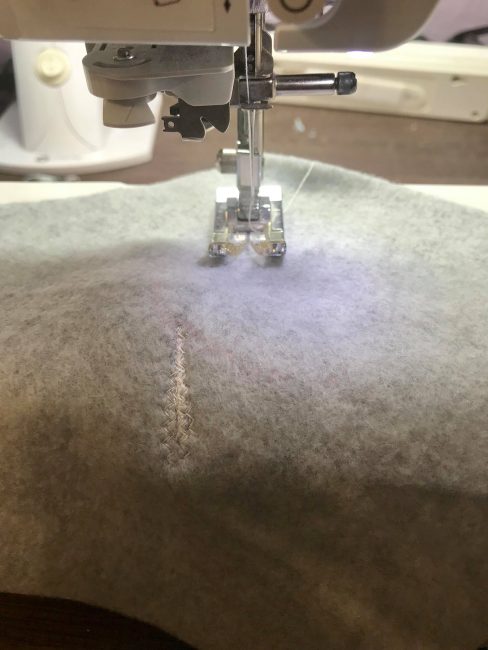
If you are mending thicker fabrics like a denim pair of pants, you could use a denim patch and do the zig-zag stitch on top. I would recommend this over interfacing on something as heavy as denim.
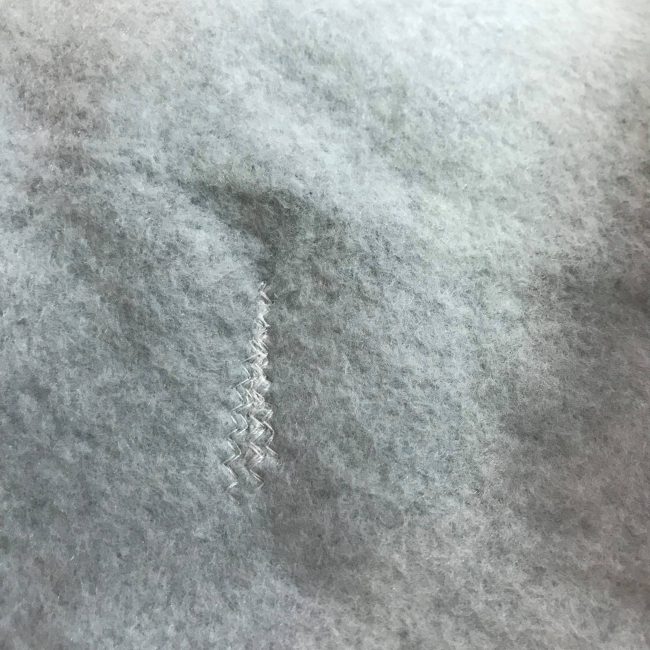
Both methods will mend a hole but I love the look of the ladder stitch method because it looks clean. Sometimes the hole is just too deep/wide to do the ladder stitch method and that is where the interfacing and zig-zag stitch would come in.
Patching Fabric
Using a patch is another effective way to mend a hole in fabric. Patching is especially helpful if you have a long tear and don't mind if the background fabric isn't a 100% match to the patch! That being said, you can place the patch fabric on the back side of the ripped seam or actual hole and still retain the original color of your garment. Once the patch is securely attached, trim any excess fabric if necessary. With proper care, your mended fabric will be as good as new!
Luckily, we have a great tutorial on How to Patch Jeans. The same methods to fixing a pair of jeans can be used for other fabrics too!
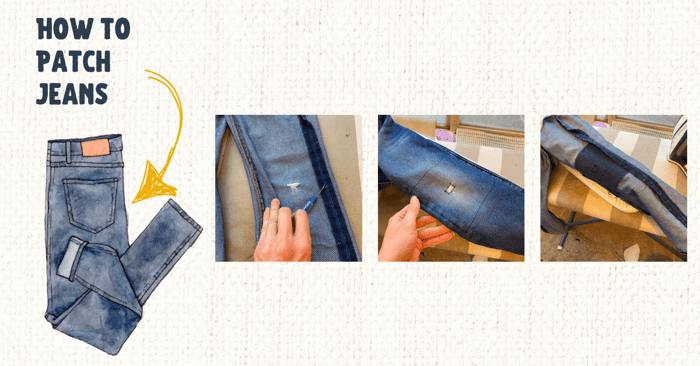
How Does Proper Mending Extend Fabric Life?
Proper mending breathes new life into torn seams, prolonging the fabric's durability. By using matching fabric and reinforcing with fusible interfacing, mended areas seamlessly blend in. Adding decorative visible mending techniques not only repairs but also adds style. Lastly, patching knit fabrics with applique patches ensures long-lasting strength.
Conclusion
To make your clothes last longer and reduce waste, it's important to learn how to mend a hole in fabric. Understanding the basics of fabric mending and identifying different types of fabric damage will help you determine the necessary tools for the repair process. Using the whip and ladder stitch, interfacing, or patching are some of the best ways to extend the life of your clothing.
Thank you for joining us today to learn how to mend a hole in fabric! Before you leave, make sure to join our Facebook Group and follow us on Instagram. Happy Sewing!
